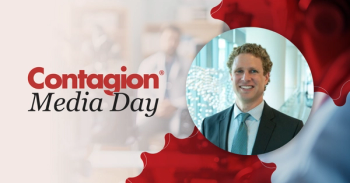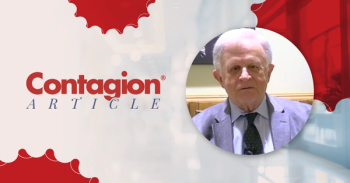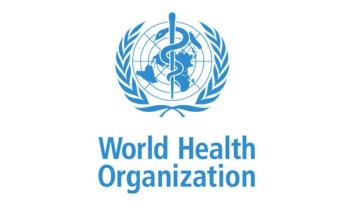Erica Kaufman West, MD, FIDSA, highlighted in the Infectious Diseases Society of America Science (IDSA) Speaks blog that despite updated universal screening guidelines for hepatitis C virus (HCV) during pregnancy, testing rates remain far below recommended targets. West points to the ongoing opioid epidemic, which has fueled a rise in HCV infections among younger individuals, including pregnant women, as a driving force behind this growing public health concern.1
Since the 1990s, the opioid epidemic has driven a surge in HCV infections, increasingly affecting younger populations, including women of childbearing age. Historically, HCV was mostly detected in baby boomers, but now, new infections are rising among pregnant individuals, raising concerns for mother-to-child transmission.2
Updated Screening Recommendations
In response, major public health organizations have revised screening recommendations. The Centers for Disease Control and Prevention updated guidelines in 2020 to recommend universal HCV screening for all pregnant individuals during each pregnancy, extending beyond the prior risk-based approach. The American College of Obstetricians and Gynecologists followed suit, issuing a practice advisory in May 2021 endorsing HCV screening during the first prenatal blood assessment in every pregnancy.3 Similarly, the Society for Maternal-Fetal Medicine recommends universal antibody testing for HCV in all pregnant patients.4
Screening Trends and Findings
A recent analysis published in JAMA earlier this year examined HCV screening trends from 2014 through 2022 in over 115 million patients across 68 US health care organizations.1 Their interrupted time series analysis compared screening rates among pregnant vs nonpregnant women before (2014-2019) and after (July 2020-December 2022) the guideline update.5
Key findings include:
- Among pregnant women, screening rates more than doubled prior to the 2020 guideline change from 52 to 117 tests per 1000 person-years.
- Post guideline, rates further increased from 141 to 253 tests per 1000 person-years.
- By the end of 2022, only 38.73% of pregnant women were tested at least once for HCV.
- In contrast, HIV screening rates in pregnancy remain over 90%, highlighting the gap in HCV testing uptake.
- Screening among nonpregnant women increased modestly from 16 to 24 tests before the guideline change and 29 to 37 afterward per 1000 person-years.
The study authors emphasize that although progress is evident, testing remains suboptimal. The perinatal period represents a critical health care touchpoint that should be leveraged for universal HCV diagnosis and linkage to care.5
What You Need To Know
Universal HCV screening during pregnancy is recommended by major health organizations but testing rates remain below 40%.
The opioid epidemic has shifted hepatitis C infections toward younger pregnant individuals, increasing the risk of mother-to-child transmission.
No approved HCV treatments exist for use during pregnancy, highlighting the importance of postpartum care and infant monitoring.
The Challenge of Treatment During Pregnancy
Currently, no HCV treatment is approved by the US Food and Drug Administration for use during pregnancy, although ongoing research explores the safety and efficacy of direct-acting antiviral therapies in this population. The American Association for the Study of Liver Diseases, IDSA, and the European Association for the Study of the Liver support considering treatment in pregnancy under clinical trial settings and recommend reporting such cases to the TiP-HepC Registry.6
In the meantime, obstetric providers are urged to connect pregnant individuals with positive test results for HCV with postpartum HCV care to initiate treatment after delivery and breastfeeding. Pediatric providers must be informed of maternal HCV status to ensure appropriate infant testing and follow-up.6
Public Health Implications
Hepatitis C infection can remain asymptomatic for years, with approximately 75% to 85% of infected individuals unaware of their status. Vertical transmission occurs in approximately 6% of infants born to infected mothers and is associated with adverse fetal outcomes, including low birth weight and fetal growth restriction.2,4
The high rates of HIV screening during pregnancy demonstrate that universal infectious disease screening in this setting is achievable. Stakeholders agree that innovative strategies and systems-level changes are urgently needed to improve HCV screening rates and ensure timely treatment, ultimately advancing toward the national goal of hepatitis C elimination.5
References
1. West E. HCV screening in pregnancy: we must do better. Infectious Diseases Society of America Science Speaks blog. July 22, 2025. Accessed August 6, 2025. https://www.idsociety.org/science-speaks-blog/2025/hcv-screening-in-pregnancy-we-must-do-better/
2. Hepatitis C virus infection. Centers for Disease Control and Prevention. Updated January 2025. Accessed August 6, 2025. https://www.cdc.gov/hepatitis/hcv/index.htm
3. Practice advisory: hepatitis C screening in pregnancy. American College of Obstetricians and Gynecologists. May 2021. Accessed August 6, 2025. https://www.acog.org/clinical/clinical-guidance/practice-advisory/articles/2021/05/hepatitis-c-screening-in-pregnancy
4. Dotters-Katz SK, Kuller JA, Hughes BL; Society for Maternal-Fetal Medicine. Society for Maternal-Fetal Medicine consult series #56: hepatitis C in pregnancy-updated guidelines. Society for Maternal-Fetal Medicine. 2021. Accessed August 6, 2025. https://publications.smfm.org/publications/577-society-for-maternal-fetal-medicine-consult-series-56/
5. Singh RP, Biondi B, Gordon SH, Linas BP, Epstein RL. Hepatitis C virus screening in pregnant and nonpregnant women after universal screening guidelines. JAMA. 2025;333(15):1356-1358. doi:10.1001/jama.2024.28774
6. American Association for the Study of Liver Diseases; Infectious Diseases Society of America; European Association for the Study of the Liver. Recommendations for hepatitis C treatment in pregnancy. American Association for the Study of Liver Diseases. Accessed August 6, 2025. https://www.aasld.org/publications/hepatitis-c-treatment-pregnancy





